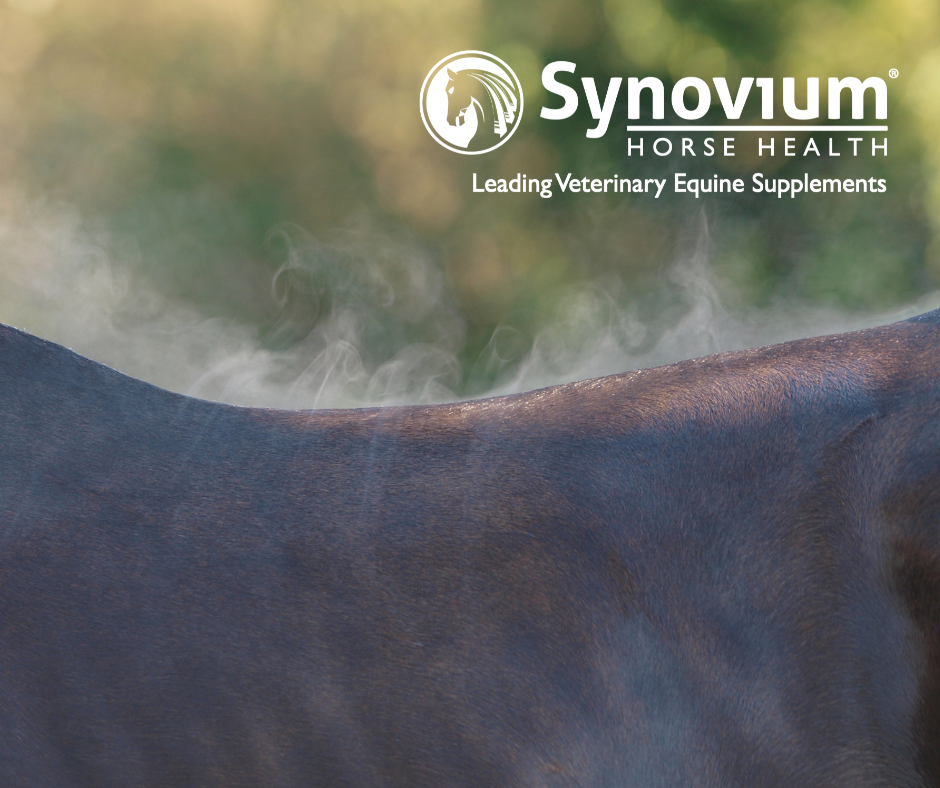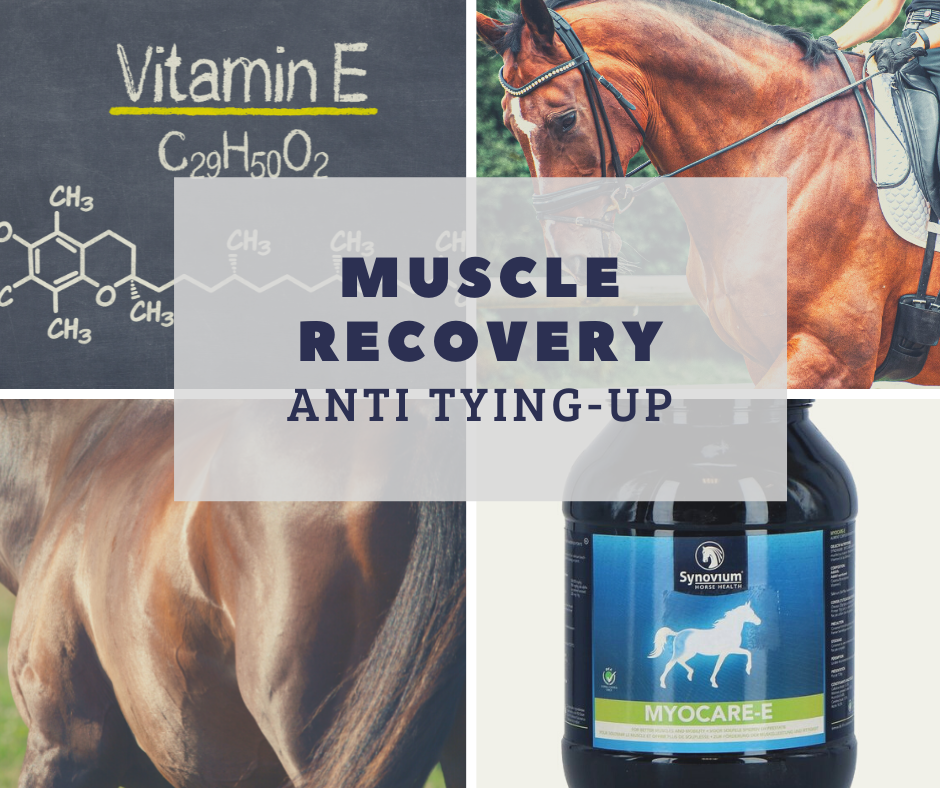Posted: 11th October 2021 | Back to news feed

Equine rhabdomyolysis (ERS) or tying-up is a condition where the horses muscle cramp most commonly over the hindquarters, back and shoulders. It is also known as Monday morning disease or Azoturia.
The signs to look out for:
- Prolonged stiffness after exercise
- Short, stiff stride that worsens as the horse works
- Firm and painful muscles to the touch
- Extreme sweating, distress, and increased heart rate
- Dark, red-brown coloured urine (Myoglobinuria)
- Depression, dehydration, hyperthermia
- ‘Thumps’ present itself as a distinctive jerking, in your horse’s flank that matches the rhythm of his heartbeat

Tying-up in horses should be distinguished from muscle soreness and strain which is very common in performance horses who overexert themselves. Exercising more than the horse’s ability, inadequate warm-up, pre-existing lameness, electrolyte depletion, or dietary imbalances will lead to muscle soreness and strain. These horses usually respond well to rest, and a gradual return to their training regime, as well as balancing the diet.
Call your vet immediately if you suspect your horse is tying up!
As you wait you can do the following:
- Keep your horse still as forcing him to move may cause further damage to his muscles.
- Try and keep him calm as stress can make this condition worse.
- Offer him a drink of water with electrolytes.
- Warm up or cool down the affected muscles, according to the season. In cold weather, place a blanket over your horse to warm him up. If it is a hot day sponge your horse down to keep him cool.
- Monitor your horse if your horse urinates while you are waiting for the vet take note of the and if possible, collect a sample.
- Look out for additional clinical signs such as dehydration, hyperthermia, and thumps.
Diagnosis of Tying-up in horses includes:
- Blood work
- A urine analysis - commonly performed to detect electrolyte imbalances, as well as the presence of myoglobin, which would also indicate tying up.
- Muscle biopsy
There are two types of tying-up sporadic exertional rhabdomyolysis refers to horses that experience an episode of tying-up on rare occasions and chronic exertional rhabdomyolysis refers to a horse that experiences repeated episodes of tying up.

Management of the condition
Research has shown that management for all types of tying-up, regardless of the cause, can significantly improve the welfare for these horses.
Firstly, keeping stress levels as low as possible, as this can be a main trigger for the onset of Tying-up.
A nutritionally balanced diet that is low (less than 10%) in non-structural carbohydrates (starch and sugar) is essential for assuring optimum health but can also prevent electrolyte imbalances and vitamin deficiencies. Research indicates that equine diets that are low in carbohydrates and higher in fat will help reduce incidences of tying-up.
Electrolyte imbalances within the individual horse rather than the diet may also be a concern in which case you can provide your horse with a balanced electrolytes supplement, like Synovium Electrolytes Q. Electrolytes are crucial to proper function of the muscle apparatus.
Adding vitamin E and Selenium to the diet of horses prone to tying-up is also recommended to increase the muscle membrane integrity. Feeding a supplement like Synovium’s Myocare-E is essential for promoting healthy muscles. Providing 2000IU of Vitamin E per daily dose.
Summary to take note
Tying-up is a condition that causes painful muscle cramping in the horse. Although ERS can take on various forms, proper management and a balanced diet are essential to minimizing the episodes. Increase the demands of exercise slowly and reduce stress in the horse’s environment.
However proper diagnosis and veterinary treatment is always priority to ensure your horse is comfortable. Consult your veterinarian if your horse is showing signs of Tying-up.
Synovium Horse Health
Leading Olympic Team Vets
The Equestrian Index newsfeed is compiled from articles submitted by advertising members and expresses the opinions of those members. Watsons Directories Ltd shall not be held liable for any inaccuracies or mis-statements therein.